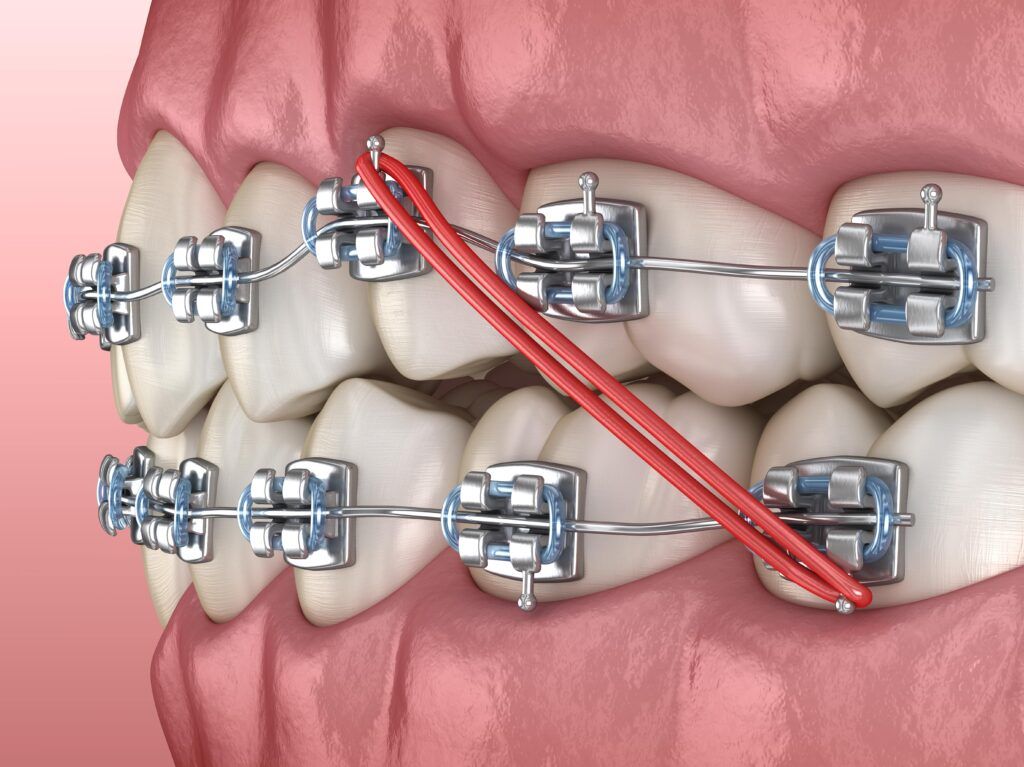The Benefits of Selecting a Cumming Orthodontist for Your Braces and Aligners
The Benefits of Selecting a Cumming Orthodontist for Your Braces and Aligners
Blog Article
Comprehensive Overview to Orthodontics Procedures for Remedying Dental Misalignments
Recognizing the details of each treatment, including their devices, benefits, and potential downsides, is crucial in making notified decisions regarding one's orthodontic therapy. As we browse with the thorough overview to orthodontic procedures for fixing dental misalignments, the intricate details of each technique will unfold, losing light on the path toward a useful and unified oral placement.
Orthodontic Procedures Overview

In enhancement to typical braces and clear aligners, orthodontists may likewise suggest other interventions like headgear, palatal expanders, or retainers to resolve details positioning concerns (braces). These treatments are customized to each patient's distinct requirements and may include a combination of treatments to attain the preferred results. Normal adjustments and tracking are crucial parts of orthodontic treatment to make sure development gets on track and to make any type of needed adjustments along the road. By undergoing orthodontic treatments, patients can not only achieve a straighter grin but likewise enhance their overall oral wellness and function.
Traditional Braces: Exactly How They Function
When considering orthodontic therapies for dental misalignments, traditional braces stand apart as a tried and true method for correcting teeth positioning. Typical braces include braces, cords, and bands that interact to apply continual pressure on the teeth, slowly moving them into the wanted alignment. The braces are affixed to the teeth utilizing a special adhesive, and the cables are threaded through the brackets. By adjusting the tension of the cables, orthodontists can manage the instructions and pressure applied to each tooth, leading them right into correct placement over time.
As pressure is used to the teeth through the dental braces, the bone bordering the teeth is improved to support the brand-new tooth settings. Patients will require routine changes at the orthodontist's workplace to guarantee the braces continue to apply the correct pressure for effective teeth movement.
Unseen Aligners: Pros and Cons
Undetectable aligners supply a practical and discreet choice to typical dental braces for dealing with dental imbalances. These clear, personalized trays are essentially unnoticeable when worn, making them an attractive alternative for individuals looking for a much more visually pleasing orthodontic treatment. One of the main benefits of undetectable aligners is their removability, enabling for easier maintenance of oral health contrasted to standard braces. Individuals can remove the aligners prior to eating or brushing their teeth, lowering the risk of food obtaining embeded the device and simplifying the cleansing procedure.

Surgical Orthodontic Options
Surgical interventions in orthodontics existing practical options for resolving complicated oral imbalances that may not be successfully dealt with via conventional orthodontic treatments. While unnoticeable aligners and traditional braces can deal with many orthodontic concerns, certain cases require medical treatment to achieve optimum results. Surgical orthodontic options are usually suggested for extreme malocclusions, substantial jaw disparities, and situations where the underlying bone structure requires alteration to accomplish appropriate placement.
One typical medical orthodontic procedure is orthognathic surgery, which entails rearranging the jaws to fix practical concerns such as difficulty talking or chewing. This surgical treatment is commonly carried out in cooperation with an orthodontist that aids straighten the teeth prior to and after the treatment. Surgical orthodontics may likewise involve treatments to subject impacted teeth, eliminate excess periodontal cells, or improve the jawbone to produce a more harmonious facial profile.
Before considering surgical orthodontic alternatives, clients undergo a comprehensive examination to establish the requirement and potential navigate to this site advantages of such interventions. cumming orthodontist. While surgical procedure might appear overwhelming, it can considerably boost both the feature and appearances of the smile in instances where traditional orthodontic treatments fall short
Retainers and Post-Treatment Care

Failure to comply with post-treatment care guidelines can result in relapse, where the teeth progressively relocate back in the direction of their initial positions. Constant retainer wear, good oral hygiene, and normal dental examinations are important for maintaining the results achieved with orthodontic surgical treatment and guaranteeing the lasting security of the dealt with oral alignment.
Conclusion
In final thought, orthodontic treatments use various choices for fixing oral misalignments. Traditional braces use steel braces and cords to move teeth right into appropriate positioning. Unseen aligners supply an even more discreet choice however may not appropriate for all cases. Surgical orthodontic choices are offered for a lot more serious top cosmetic dentist imbalances. Retainers are commonly utilized post-treatment to keep the brand-new alignment. Generally, orthodontic treatments can effectively improve dental wellness and aesthetic look.
As we browse via the comprehensive overview to orthodontic treatments for dealing with oral imbalances, the intricate information of each approach will unfold, shedding light on the path towards a practical and harmonious oral positioning. - cumming orthodontics
One of the most usual orthodontic therapies is the use of dental braces, which consist of metal brackets and cords that apply mild pressure to gradually move teeth right into the desired placement.When considering orthodontic therapies for dental misalignments, typical dental braces stand out as a reliable technique for correcting teeth positioning. In addition, undetectable aligners might not be suitable for complex orthodontic problems that require even more substantial teeth activity, as they are commonly suggested for mild to modest cases. Retainers are personalized orthodontic tools developed to hold teeth in their dealt with placements after the completion of orthodontic treatment.
Report this page